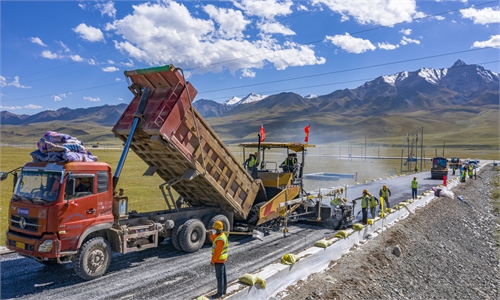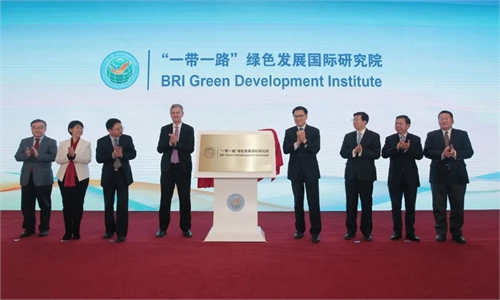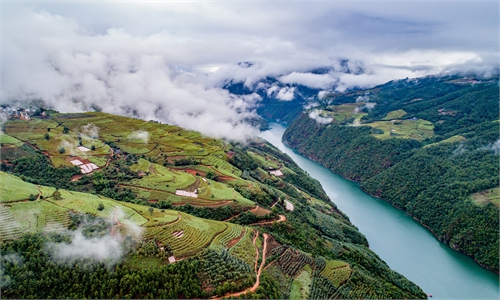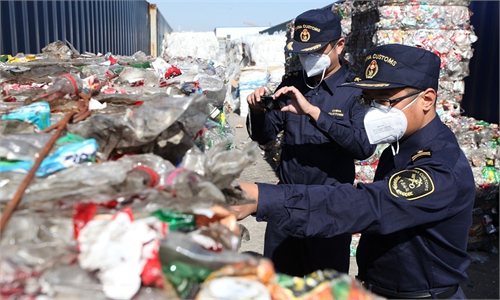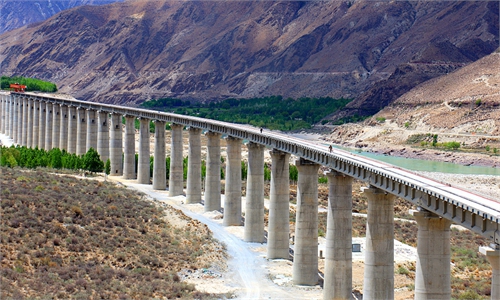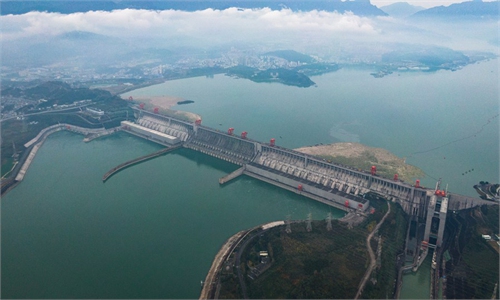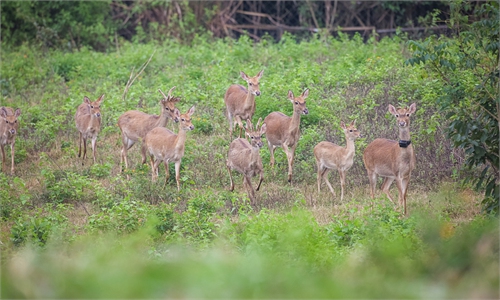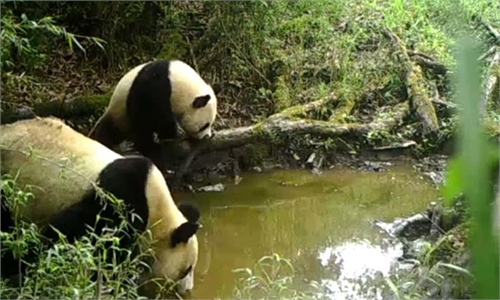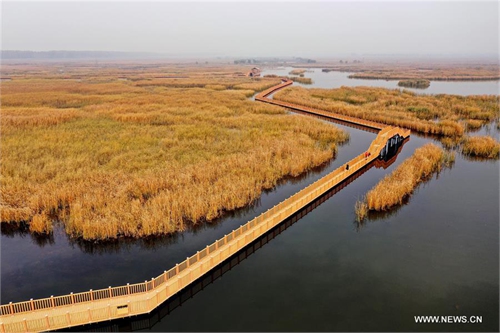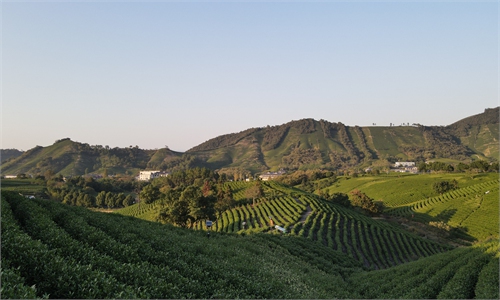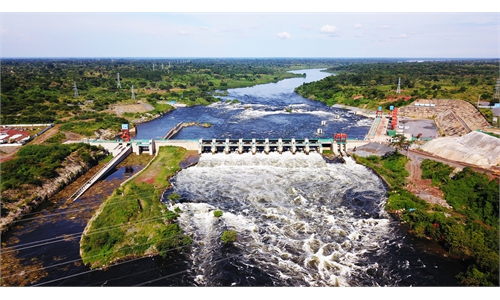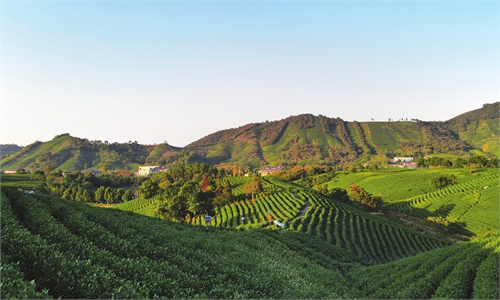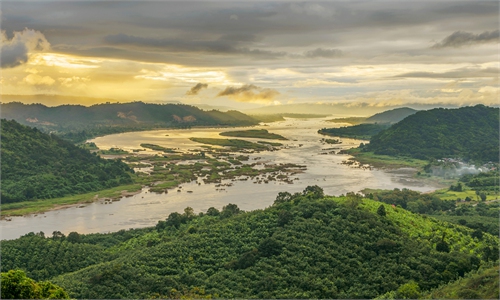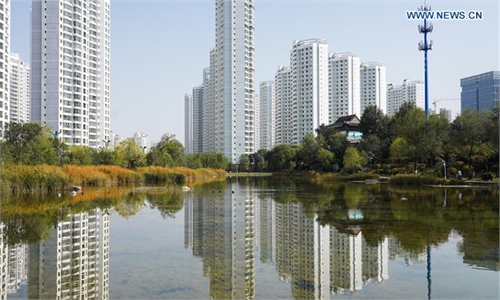BRI energy partnership eyes green recovery
Participants in the China-proposed Belt and Road Initiative are considering proposing a green energy development initiative at a forum for energy ministers of BRI countries next year, as the development of green energy has gained traction worldwide in the wake of the COVID-19 pandemic.
Think tank launched to lead BRI countries' green development, construction, investment
An international think tank was launched in Beijing on Tuesday, a step for China to further promote environmental conservation and green construction across Belt and Road Initiative (BRI) regions with high-level researches and cooperation.
China unveils early warning and data sharing website to cooperate with Mekong River countries
China made good on its promise to share year-round hydrological data on upper reaches of the Mekong River with the kickoff of an online information sharing platform on Monday. The platform aims to provide reliable forecasting and early warning services related to floods and droughts.
China to implement comprehensive measures to ban solid waste imports
China is expected to realize zero import of solid waste by the end of 2020, after which the country will implement strict measures to consolidate the policy of banning the imports.
Sichuan-Tibet Railway construction pledges to lessen environmental impact: environment authority
China's environment authority on Saturday vowed to make environmental protection a priority during the construction of the Sichuan-Tibet Railway by making a plan that will have the smallest possible impact on the local environment and establishing a collaborative mechanism to supervise construction.
China's Three Gorges sets world record for annual power generation from a single hydropower station
China's largest power-supply plant, the Three Gorges Dam, has generated 103.1 billion kilowatt-hours of electricity in 2020 as of Sunday morning, breaking the world record for annual power generation volume from a single hydropower station, media reported on Thursday.
Jointly building a green Belt and Road with concerted efforts to create synergies for global biodiversity conservation
Biodiversity conservation has always been a key component to ensure the high-quality development of the Belt and Road Initiative (BRI). At the Second Belt and Road Forum for International Cooperation, Chinese President Xi Jinping stressed, "The Belt and Road aims to promote green development.
Harmonious coexistence between human and nature:
Harmonious coexistence between human and nature is a basic principle of China's ecological civilization construction and a distinctive feature of China's vivid and effective practice.
Building a community of life on earth: Chinese experience in ecosystem conservation and restoration
The Chinese government has long been attaching great importance to the protection and restoration of natural ecosystems. Since the 1980s, relevant work has been carried out in the construction of the "Three-North" Shelterbelt and the Yangtze River Shelterbelt.
The giant panda: a successful conservation story the world needs to hear
Dramatic global changes to the environment have wrought unprecedented reductions in biodiversity, indicating the arrival of the sixth mass extinction.
Biodiversity beyond 2020: Achieving global biodiversity targets through national targets
In May 2021, the 15th meeting of the Conference of the Parties (COP15) of the Convention on Biological Diversity (CBD) will be held in Kunming, Yunnan Province.
In-Situ and Ex-Situ Plant Conservation in China
Plant plays an essential role in maintaining the global environment and supporting human development. China has over 35,000 species of higher plants, about 10% of the world flora, which made it the 3rd largest plant species owner of the world.
China's first 'ecological county' Anji pursues green growth
The dense bamboo forests and lush tea plantations that surround Anji, a county in East China's Zhejiang Province, first gained fame 20 years ago as the setting for the Oscar-winning movie Crouching Tiger Hidden Dragon.
BRI hydropower projects around the world focus on green construction, operation
Since the Belt and Road Initiative (BRI) was proposed in 2013, China has invested and constructed more than 80 hydropower projects globally across six continents. While helping different regions raise standards of living and stimulate their economies, these projects also demonstrate the concept of "green development" in their design, construction and operation procedures.
Village goes from limestone mining hub to green hospitable haven
Yucun village in East China's Zhejiang Province is now a popular tourist attraction that is hailed as one of the most beautiful Chinese villages, attracting thousands of visitors each day with its fresh air, clear rivers and lush mountains. The 4.86-square-kilometer village has been praised as a “natural oxygen bar” and an ideal place for a weekend escape.
Remote sensing satellites help China monitor environment amid COVID-19
Satellites remote sensing technology is helping China to continue to monitor the environment during the COVID-19 pandemic, breaking through restrictions on travel, gatherings and past lockdowns.
China begins sharing year-around data from the Lancang River with Mekong river countries
China has initiated an information sharing platform and officially started sharing year-around hydrological data collected from the upper reaches of the Mekong River - known at the Lancang River in China - with downstream countries on Monday, keeping a promise made by Chinese Premier Li Keqiang at the 3rd Lancang-Mekong Cooperation (LMC) Leaders' Meeting on August 24.
Chinese environment authorities refute US smears, call for US to take responsibility
US attacks on China's contribution to protecting the environment and tackling global climate change are based purely on political purposes, and the US should take responsibility as a big power in global environment and climate affairs, said officials from China's environment authority.
